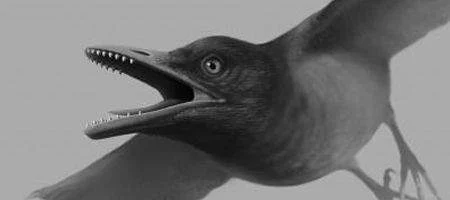A new fossil discovery has shown that some early birds evolved teeth adapted for specialized diets.

A study of the teeth of a new species of early bird, Sulcavis geeorum, suggests they were adapted for eating prey with hard exoskeletons such as insects or crabs, hinting at previously-unrecognized ecological diversity.
Sulcavis geeorum is an enantiornithine bird from the Early Cretaceous – 121 to 125 million years ago – and was found in Liaoning Province, China.
While enantiornithine birds were the most numerous type during the Mesozoic, Sulcavis is the first to be found with ornamented tooth enamel.
“While other birds were losing their teeth, enantiornithines were evolving new morphologies and dental specializations,” says Jingmai O’Connor, lead author of the new study. “We still don’t understand why enantiornithines were so successful in the Cretaceous but then died out – maybe differences in diet played a part.”
The fossil specimen has strong teeth with grooves on the inside surface, which likely strengthened the teeth against harder food items. No previous bird species have preserved ridges, striations, serrated edges, or any other form of dental ornamentation.
“This study highlights again how uneven the diversity of birds was during the Cretaceous. There are many more enantiornithines than any other group of early birds, each one with its own anatomical specialization.” says study co-author Luis Chiappe, from the Natural History Museum of Los Angeles County.






